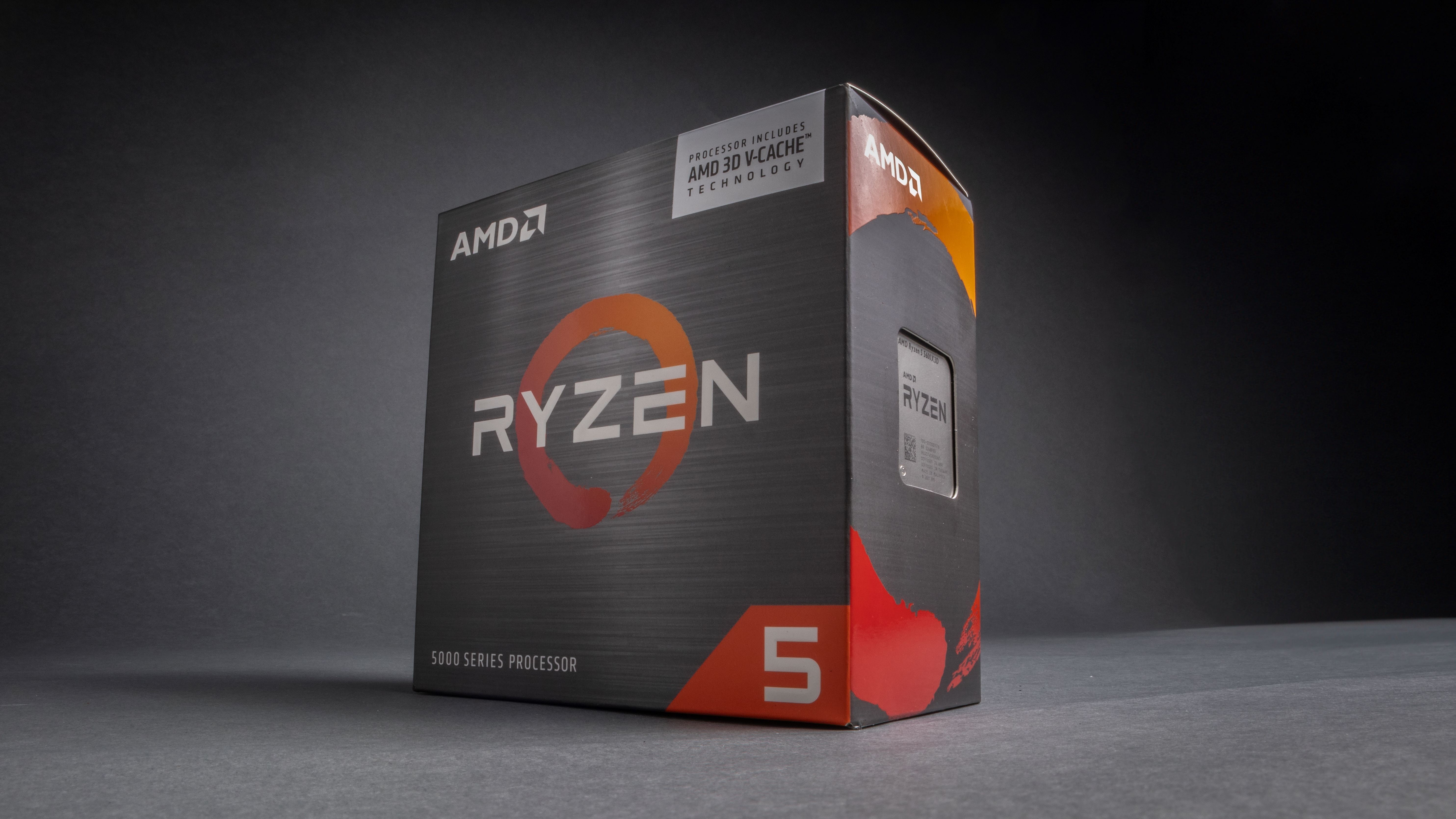
Micro Center announced today that AMD’s new, limited-edition Ryzen 5 5600X3D processor would be available exclusively at its stores for $229 while supplies last. In a completely unique arrangement between AMD and Micro Center, the retailer will be the sole source of Ryzen 5 5600X3D processors for the duration of their availability.
The six-core 12-thread Ryzen 5 5600X3D features 96MB of total L3 cache, which comes courtesy of AMD’s game-boosting 3D V-Cache tech, and drops into AM4 platforms that support DDR4 memory, thus providing a lower-cost pathway to a powerful budget gaming system that will trade blows with the best CPUs for gaming, perhaps even taking the crown of the best mid-range gaming chip. The Ryzen 5 5600X3D rounds out AMD’s portfolio of gaming-specific X3D processors, which now spans from $229 up to $669.
Intel’s Core i5-13400 processors currently lead the mid-range gaming market, but the Ryzen 5 5600X3D will have overall similar pricing yet likely provide faster gaming performance. It could even potentially rival far more expensive processors, like AMD’s own $540 Ryzen 9 7950X, and could even be the best bang-for-the-buck chip in recent memory.
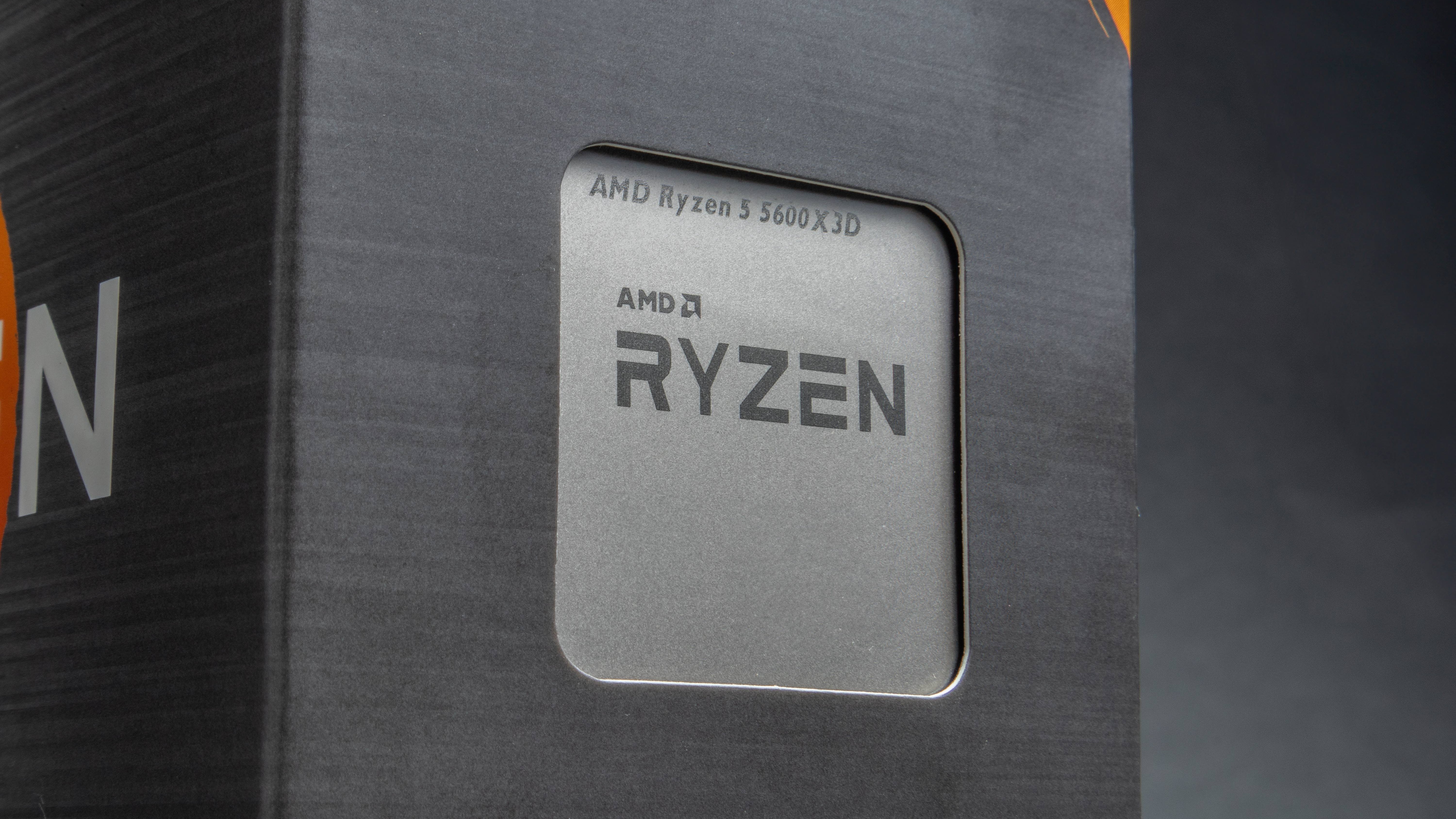
Micro Center will also sell a $329 bundle with the six-core 12-thread Ryzen 5 56003XD, an ASUS B550-Plus TUF motherboard, and 16GB of G.Skill Ripjaws V DDR4 memory. At launch, the retailer will offer a pre-built PowerSpec G516 system with a Radeon 6650XT, 16GB of memory, and a 500GB NVMe SSD, for $849.
Micro Center will only sell the Ryzen 5 5600X3D processors in its stores while supply lasts, beginning July 7. AMD and Micro Center haven’t confirmed the number of processors that will be available, but Micro Center expects to have stock for a few months. Micro Center currently has 25 outlets in 18 states, but is expanding to 28 outlets. Let’s dive into the details.
AMD Ryzen 5 5600X3D Specifications and Pricing
The six-core Ryzen 5 5600X3D slots in as a lower-priced version of the eight-core Ryzen 7 5800X3D that continues to rank among the best CPUs for gaming due to its 3D V-Cache technology that utilizes a 3D-stacked chiplet to boost L3 cache to 96MB. Like the 5800X3D, the six-core 12-thread 5600X3D has a total of 96MB of game-boosting L3 cache, uses the previous-gen Zen 3 architecture, and drops into AMD’s last-gen AM4 motherboard platforms.
The Ryzen 5 5600X3D operates at a 3.3-GHz base and 4.4 GHz boost clock and is crafted with the same underlying configuration as the Ryzen 5 5600X/5600. As we’ve seen with AMD’s other X3D processors, the company has dialed back the peak frequency by a few hundred MHz compared to the X-equivalent (5600X), but the 5600X3D’s peak frequency is the same as the Ryzen 5 5600. Surprisingly, the Ryzen 5 5600X3D has a 105W TDP rating, 40W higher than its similarly-equipped counterparts. We expect this TDP rating to be a bit over-spec, but we’ll have to test to verify the power metrics.
The 5600X3D supports DDR4-3200 memory and comes with all the standard features of other Ryzen 5000 processors, but it doesn’t support direct CPU overclocking or the auto-overclocking Precision Boost Overdrive. Some motherboard makers do have unofficial workarounds to enable various levels of overclocking for the Ryzen 7 5800X3D, and it’s likely those same unofficial (and warranty-voiding) options will also be available for the 5600X3D. As a slight consolation, the 5600X3D does support memory overclocking, though we have found that memory overclocking has a very small impact on other X3D processors.
As with all of AMD’s other X3D models, the Ryzen 5 5600X3D doesn’t have a bundled cooler. We haven’t been told of any specific cooler recommendations, but given the TDP rating, it likely requires a 240mm liquid cooler (or air equivalent) like the 105W Ryzen 7 5800X3D.
AMD’s AM4 platform has soldiered on for six years, but it continues to offer a strong value proposition for lower-end systems, primarily due to its support for value-centric DDR4 memory, and AMD plans to continue supporting the platform for budget-geared systems. The plentiful and affordable AM4 ecosystem and its support for inexpensive DDR4 memory have kept the platform attractive for value-seekers who can’t afford to step up to the new Zen 4 processors that drop into newer AM5 motherboards and only support pricier DDR5 memory.
As a result, the $289 Ryzen 7 5800X3D has had plenty of staying power and is currently the go-to upgrade for enthusiasts with older Ryzen systems, as it serves as the fastest gaming processor you can slot into the AM4 platform. In fact, it is even faster in gaming than AMD’s entire roster of standard Zen 4 processors — you’ll have to step up to the $438 Ryzen 7 7800X3D to find a faster AMD chip.
Intel’s Core i5-13400/F has dominated the ~$200 price point for new system builders, and AMD’s new Zen 4 offerings struggle to compete due to the premiums for DDR5 and AM5 motherboards.
Here we can see that the Ryzen 5 5600X3D will go a long way to addressing Intel’s pricing advantage for DDR4-equipped Core i5-13400 systems. Micro Center’s bundle appears to be an exceptional deal that slightly undercuts the overall pricing for the DDR4-equipped Core i5-13400 configuration, but the Ryzen 5 5600X3D should offer significantly more performance than the Intel setup, thus yielding better fps-per-dollar metrics.
Also, the Micro Center bundle deal is obviously a solid deal with an included B550 motherboard — it might be difficult to cobble together your own system separately at the same price point.
AMD Ryzen 5 5600X3D Gaming Benchmark Projections
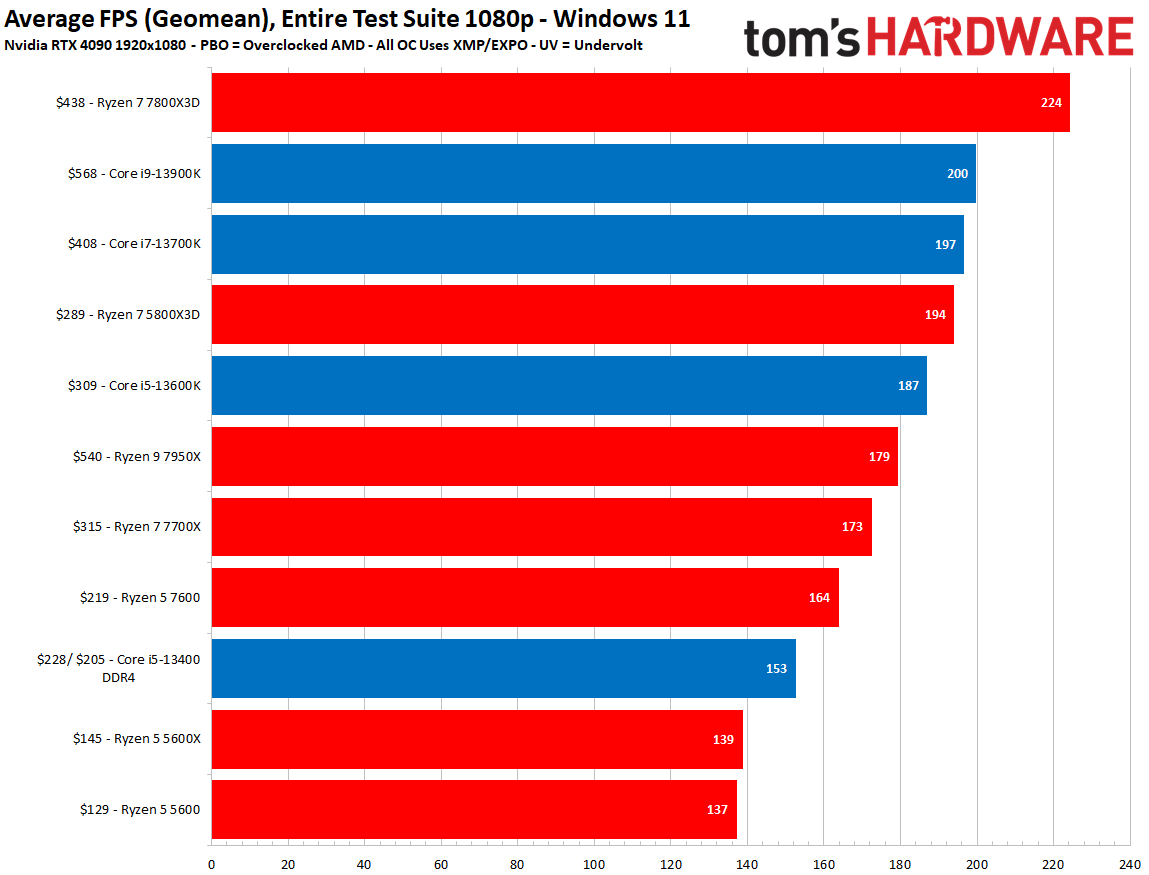
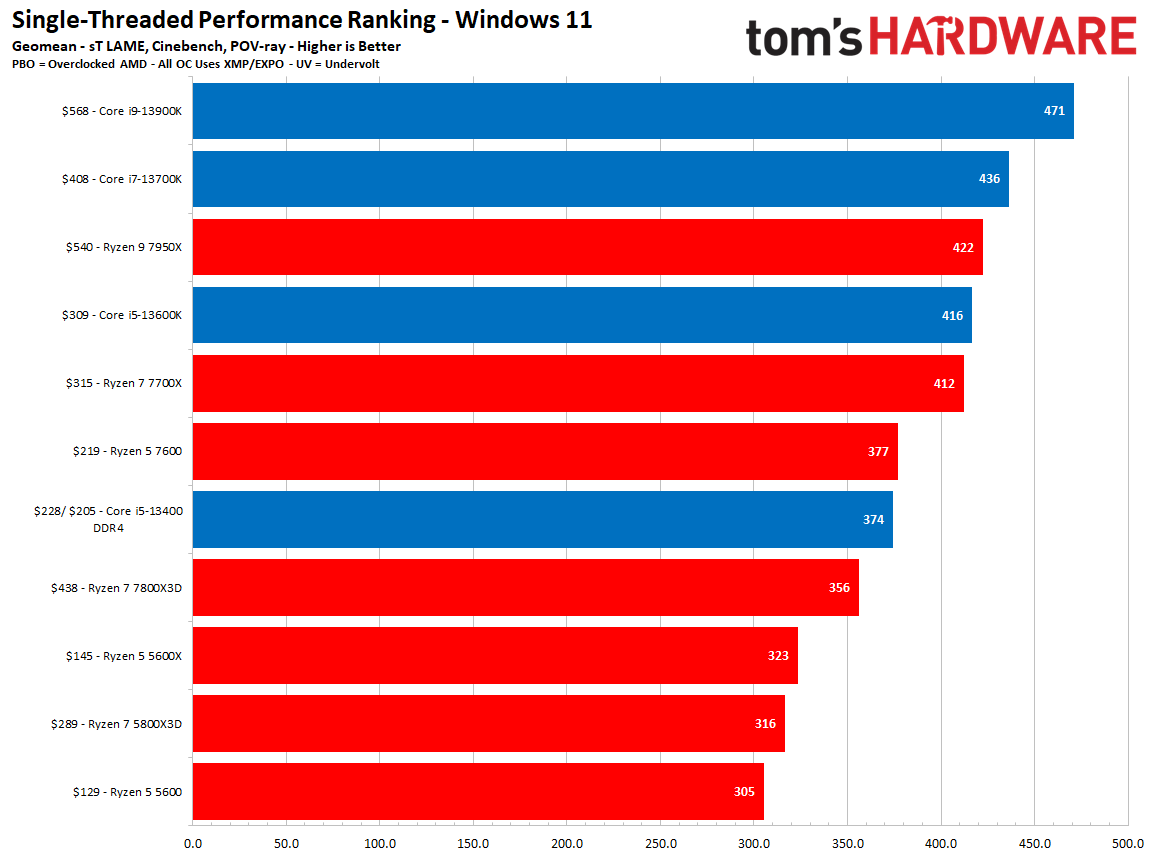
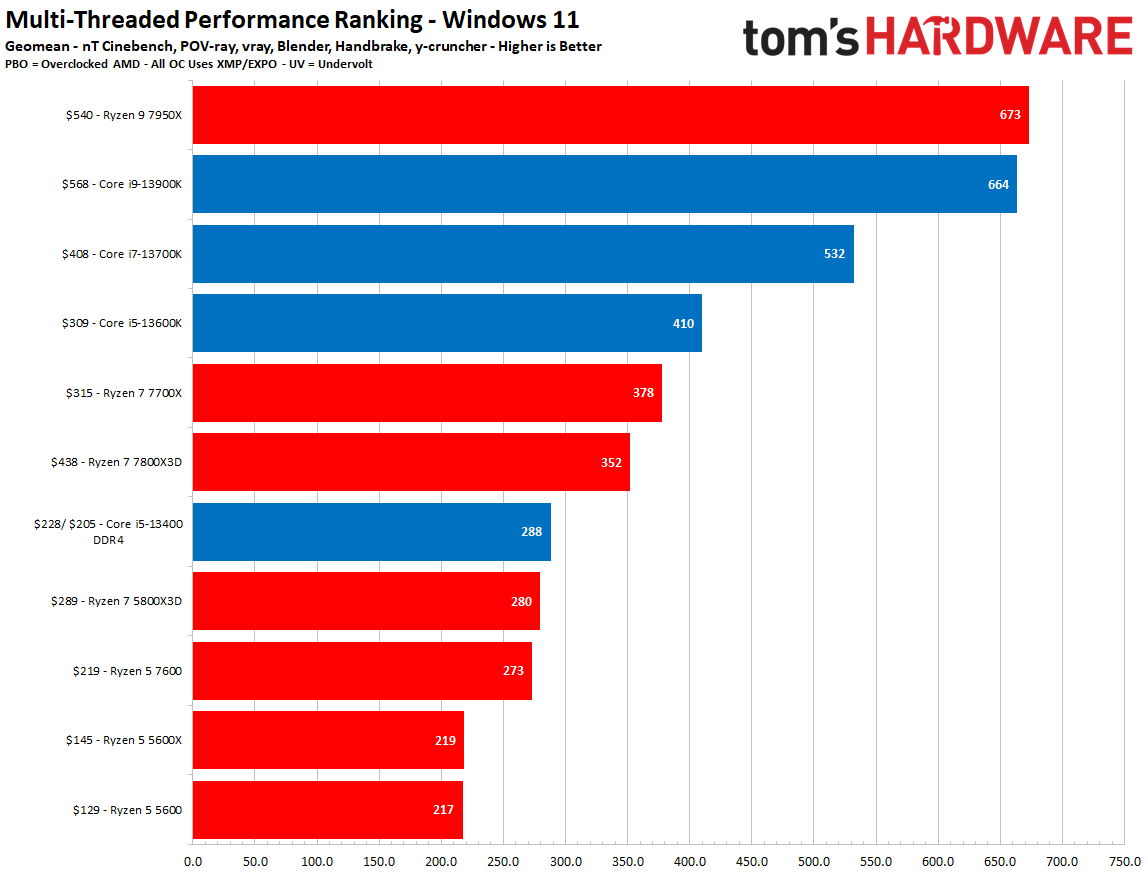
AMD and Micro Center haven’t shared performance benchmarks, but we can spitball gaming performance based on the Ryzen 5 5600X3D’s clock speeds, core count, and similar amount of 3D V-Cache to what we see on the 5800X3D. Here we can see the geometric mean of the gaming performance of the relevant competing processors from our CPU benchmarks hierarchy. Take this with a grain of salt, but we conservatively theorize the Ryzen 5 5600X3D could be anywhere from five to ten percent slower than the Ryzen 5800X3D in 1080p gaming, which would either place it slightly above or below the $540 Ryzen 9 7950X in the above chart.
If the 5600X3D performs as expected, that would yield an impressive fps-per-dollar metric that easily outstrips a system built around the Core i5-13400, despite their similar pricing. However, the 5600X3D does have two fewer cores than the Ryzen 7 5800X3D, and that chip already trails the Core i5-13400 in application benchmarks (particularly in single-threaded applications). Also, all the usual caveats of the 3D V-Cache technology will apply — this tech results in reduced performance in some productivity apps and doesn’t accelerate all games, so you'll need to ensure that it fits your needs.
The continued success of the Ryzen 7 5800X3D has found many AMD users upgrading older systems instead of making the jump to Zen 4 and the pricier new AM5/DDR5 platform, which obviously could lead one to think that AMD is cannibalizing its own flagship product line with a superior lower-cost chip. In most cases, this has actually kept early Ryzen adopters on an AMD platform instead of them jumping ship to Intel’s newer Raptor Lake platforms.
The Ryzen 5 5600X3D will offer an even lower-cost pathway to upgrading existing AM4 systems, and it will also serve as a great counter to the Intel Core i5-13400 for new system builds. The limited availability of these chips will probably curtail any significant cannibalization of AMD’s pricier options, but it isn’t clear how many chips Micro Center has in stock.
Typically, we would expect that these chips are merely Ryzen 7 5800X3D’s that suffered defects in manufacturing, and were then harvested as lower core count models and placed in storage. However, the 3D V-Cache manufacturing process is more expensive than standard chip packaging, so we expect that AMD only earmarks its fully validated eight-core silicon for the expensive chip-stacking treatment. As such, it is possible that this is a purpose-built special-edition chip with intentionally disabled cores.
Regardless, Micro Center predicts several months of availability, but that does depend upon how fast it sells the chips, bundles, and prebuilt systems. We expect that demand will be brisk. Sales begin on July 7, and if tradition holds, reviews will arrive around the same time.







